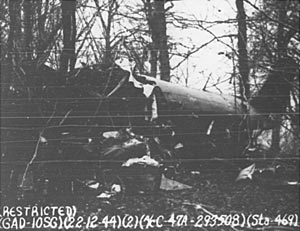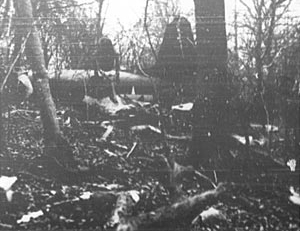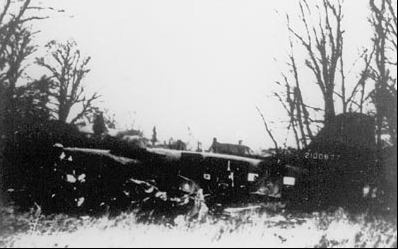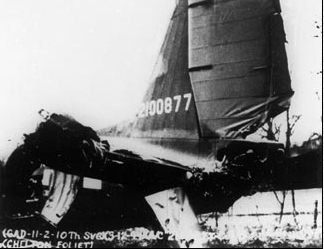Crash of a Douglas C-47A-25-DK in RAF Ramsbury: 3 killed
Date & Time:
Dec 22, 1944
Registration:
42-93508
Survivors:
Yes
MSN:
13427
YOM:
1944
Crew on board:
5
Crew fatalities:
Pax on board:
0
Pax fatalities:
Other fatalities:
Total fatalities:
3
Circumstances:
The crew was on his way to RAF Grove, Oxfordshire, but a landing was impossible due to poor visibility. The aircraft was diverted to Exeter Airport but again, landing was not possible due to marginal weather conditions. The crew continued to RAF Ramsbury and on final approach, the aircraft hit tree tops and crashed in a wooded area. Three crew members were killed while two others were injured.
Crew:
1st Lt Benjamin A. Taylor, pilot, †
P/O Willard Leutenegger, copilot, †
T/Sgt John J. Vojcik, crew chief, †
Daniel V. B. Riley, assistant to the crew chief,
Charles A. Kdlak, radio operator.
Source & photo:
http://www.ramsburyatwar.com/crashes/c47ramsbury.htm
Crew:
1st Lt Benjamin A. Taylor, pilot, †
P/O Willard Leutenegger, copilot, †
T/Sgt John J. Vojcik, crew chief, †
Daniel V. B. Riley, assistant to the crew chief,
Charles A. Kdlak, radio operator.
Source & photo:
http://www.ramsburyatwar.com/crashes/c47ramsbury.htm





